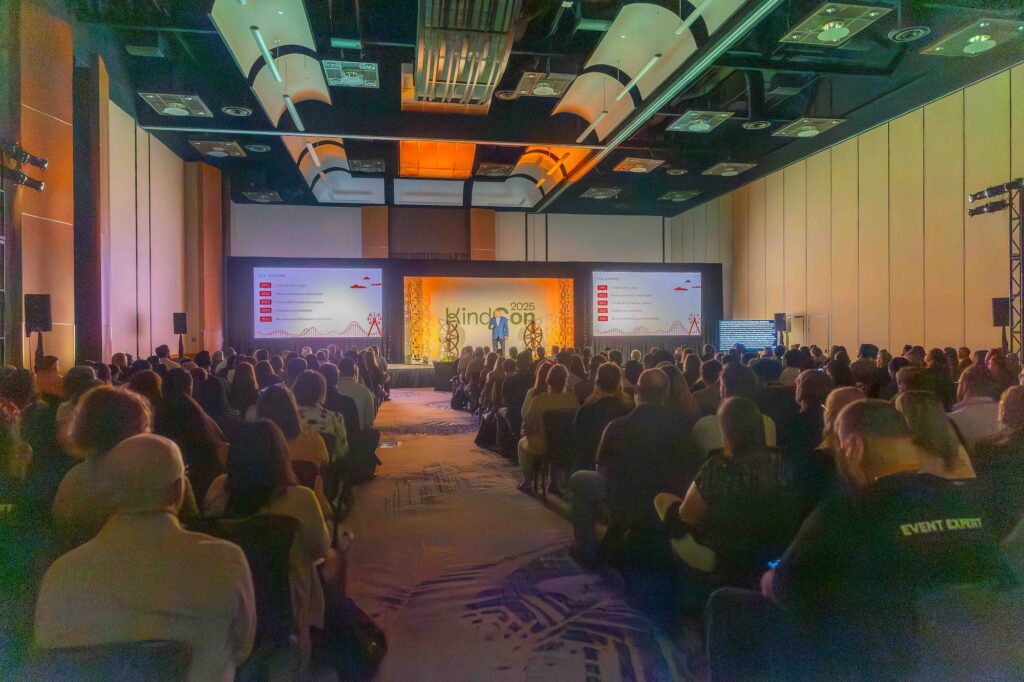
We recently attended the Generosity Commission Report member briefing, and we were blown away by the findings they presented. While some of the trends aren’t brand new (we see you, decline in giving), it was the recommendations they shared that really got our attention. We’re seeing some real potential to combat the issues plaguing the philanthropic landscape today.
Here are our top four takeaways from the report – and the corresponding recommendation for each.
1. The landscape of giving is (still) changing and there is (still) much more to learn.
It probably won’t shock you to see again that there has been a decline in giving and volunteering to nonprofits over the past two decades. This has been in our minds over the past few years especially. According to the report, the share of U.S. households donating to nonprofits has dropped by 15.8% over the last 10 years. The volunteer rate with nonprofits fell to under 25% in 2015 and to 23% in 2021.

These stats feel very scary. But when you dig deeper, it’s clear that this decline corresponds with economic precarity, declining religiosity and social disconnection, and decreased trust in institutions. Simultaneously, there has been a rise in more diverse, less formalized ways of giving. People are engaging in more crowdfunding, mutual aid, and new technologies like cash apps.

Recommendation #1: Gather more data, widen the research net
Discovering the nuance of these shifts is key. The sector needs to widen the research net and gather more data to fully understand the mosaic that is generosity. The current research methods may not be capturing the full picture. This research should also focus on identifying effective strategies for combating this decline by promoting generosity in all its forms.
2. Everyday givers and volunteers are a vital asset to our communities, but their numbers are dwindling.
Everyday givers (those who give smaller amounts, often under $100) and volunteers are the heart of civil society. They are the ones who are aware of local needs, think of innovative solutions, and are willing to roll their sleeves up and address the challenges facing their communities. They are the ones creating contextual, community-based solutions.
Sadly, as many as 20 million households dropped out of giving between 2010 and 2016 in the wake of the 2008 recession, and they have continued to drop in subsequent years. In a study that included information on the 2022 decline in donors, 90% of the decline for that year was attributable to losses of people donating $500 and under.
This has made a large impact on funding for programs. But if you go deeper, you can see that it also represents a loss of diverse perspectives and vital social connections. Fewer and fewer people are experiencing the community-building power of generosity. This lack of engagement begets a lack of engagement. A broader base of giving and volunteering leads to a more diverse and robust civil society, reflecting a wider range of organizations, viewpoints, interests, and perspectives.
Recommendation #2: Promote social connection and civic engagement
The research shows that group membership and organized activities have the most substantial impact on encouraging people to give and volunteer, more than individual social connections or informal volunteering. People who belong to one or more community groups are significantly more likely to both volunteer (by 14.3%) and donate money (by 8.6%).

There is also a strong correlation between giving and volunteering, and voter participation in national elections. This finding suggests a broader link between generosity and civic engagement. The more engaged someone is, the more likely they are to give of their time and resources.
Encouraging social participation and civic engagement, through the creation and participation in groups and activities that foster social connection is a must. This could involve supporting existing community organizations, creating new opportunities for people to connect, or promoting initiatives that bring people together around shared interests. It’s also important to promote youth as givers and volunteers, which should foster a lifelong commitment to generosity.
3. Small nonprofits are disproportionately affected by declining giving
The part of the donor pool that is shrinking is everyday donors. More and more giving to nonprofit organizations has been coming from a smaller pool of wealthy donors. Interestingly, the giving preferences of high-net-worth donors differ from those of everyday donors, they tend to prefer higher education and medical research in lieu of community organizations.

Meanwhile, 88% of nonprofits have a budget of less than $500,000 and rely considerably more on individual contributions than larger nonprofits. They have fewer staff resources to commit to attracting major gifts, and therefore are sustained by smaller donations.
As such, smaller, local nonprofits have experienced a greater loss than larger organizations in recent year. This is particularly concerning because it’s these organizations that are often addressing local needs and form the bedrock for our social fabric.
Recommendation #3: Government should incentivize supporting small nonprofits
Because smaller nonprofit organizations and community foundations have taken the largest hit in this generosity downturn, it is important for the government to provide targeted support on two fronts. First they need to empower smaller nonprofits to connect and engage with the broader, general donor pool, which includes major givers. This might include providing capacity-building programs, fundraising training, or initiatives that connect small nonprofits with potential donors in their communities. Secondly, the government can also incentivize individuals to support smaller nonprofits by increasing the availability of charitable tax deductions when giving to those types of organizations.
4. We don’t talk about everyday generosity enough.
For some reason, it is uncommon to talk about everyday generosity. It’s unclear whether it is rooted in a desire to be modest, a general bias toward discretion or privacy, or a belief that is a social faux pas. Neither group (high-capacity donors or everyday donors) are talking enough about their giving or volunteerism.

At the same time, many organizations that once relied on the longstanding 80/20 rule (deriving 80% of contributions from large-scale donors), that ratio has crept up to 90%, or 95% in some charities. Critics say that in the process, the infrastructure catering to smaller donors has begun to atrophy. Everyday gifts are not as celebrated, and givers may feel they don’t fit into the prevailing generosity narrative.
Recommendation #4: Change the conversation
Even though everyday givers don’t talk about their giving or volunteering much, they seem to be open to doing so with those close to them, if it will also encourage them to give. That’s why it’s important to encourage the general population to talk about generosity and open up a conversation that normalizes it. Spreading stories of generosity is a key part of encouraging it in others.
One option is for nonprofits to invest in fundraising efforts that target everyday donors and emphasize the impact of small contributions. Additionally, advocating for policies that incentivize giving, such as increasing the availability of charitable tax deductions, can signal the importance of charitable giving as a societal value. All of this will also affect how younger generations perceive and talk about generosity, hopefully setting a new trend moving forward.
And of course, encouraging public figures and leaders to speak openly about their experiences with generosity, whether giving or volunteering, will also help to normalize the behavior. It just can’t be the only focus in this instance.
By understanding the changing landscape of generosity, in broader terms than we have in the past, we can adapt and keep our generosity sector thriving. Focusing on supporting smaller, local nonprofits, and getting the surrounding community (everyday givers) engaged is key. Fostering social connection and community, as well as empowering people to share their experiences and talk about generosity, will change the way we think about philanthropy. It will bring more people in and include everyone in the generosity narrative. Bottom line: we all have a part to play in adapting to changing trends and bolstering the generosity sector for the future.
Be the first to read our resources.
The world is changing quickly—and our resources help you stay on top of it all. Sign up to get new insights, success stories, and more, sent right to your inbox.




